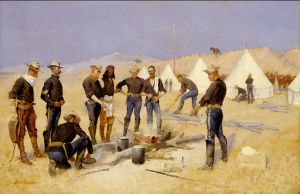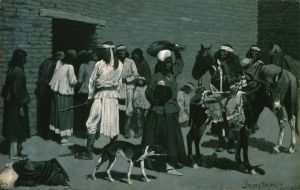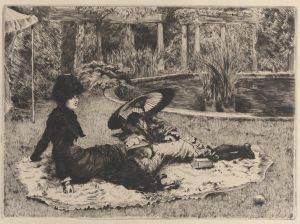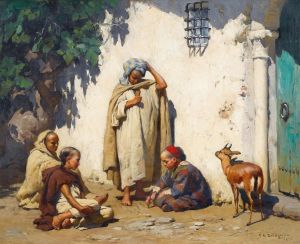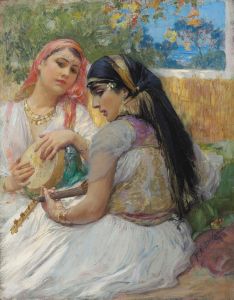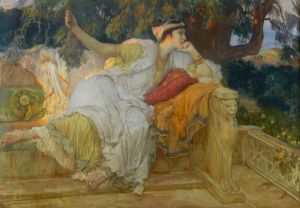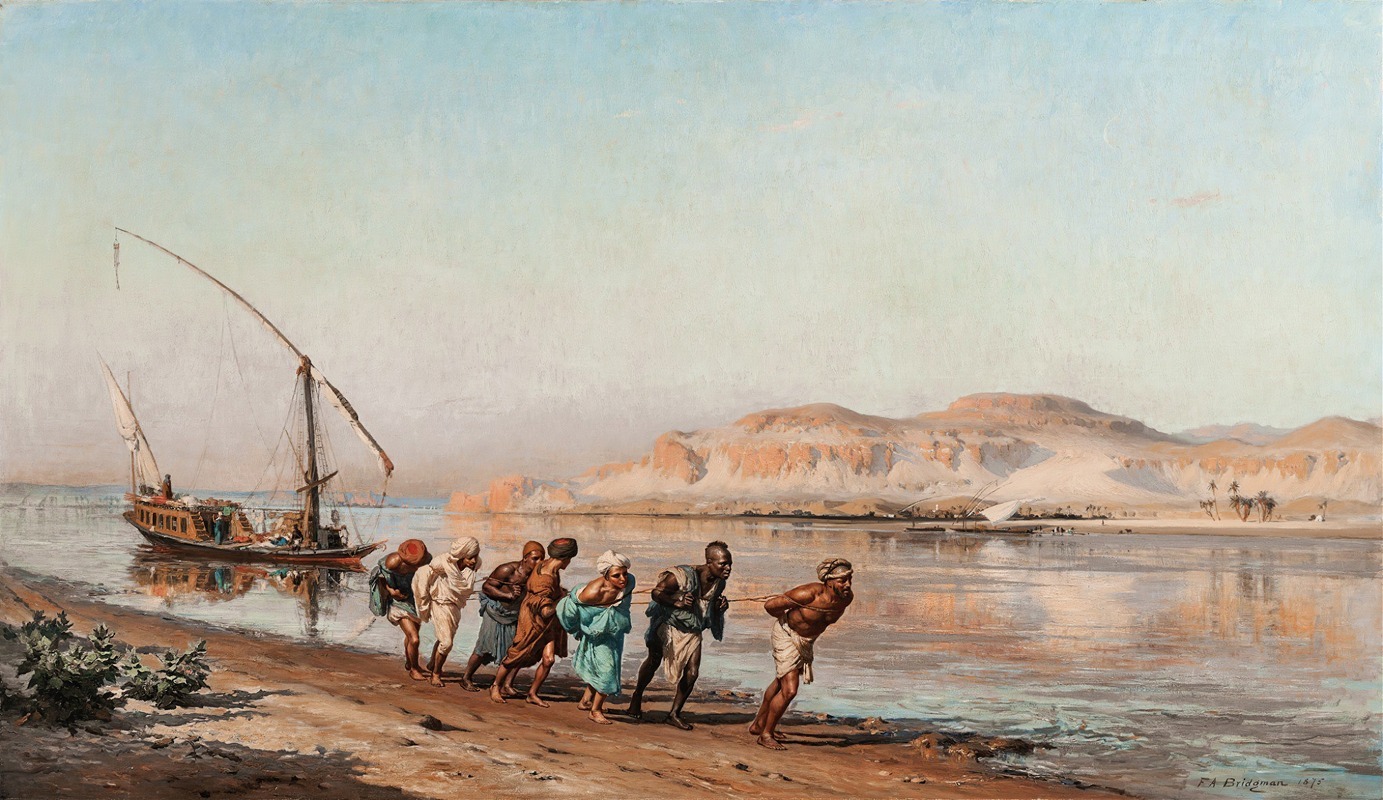
Towing On The Nile
A hand-painted replica of Frederick Arthur Bridgman’s masterpiece Towing On The Nile, meticulously crafted by professional artists to capture the true essence of the original. Each piece is created with museum-quality canvas and rare mineral pigments, carefully painted by experienced artists with delicate brushstrokes and rich, layered colors to perfectly recreate the texture of the original artwork. Unlike machine-printed reproductions, this hand-painted version brings the painting to life, infused with the artist’s emotions and skill in every stroke. Whether for personal collection or home decoration, it instantly elevates the artistic atmosphere of any space.
Frederick Arthur Bridgman (1847–1928) was an American artist known for his Orientalist paintings, which often depicted scenes inspired by his travels in North Africa and the Middle East. One of his notable works, "Towing on the Nile," reflects his fascination with the landscapes, culture, and daily life of Egypt during the late 19th century.
"Towing on the Nile" portrays a serene and picturesque scene along the Nile River, a subject that captivated many Western artists during the Orientalist movement. The painting depicts a group of figures engaged in towing a boat along the riverbank, a common practice in Egypt at the time. The composition highlights the interplay between human activity and the natural environment, with the river, vegetation, and distant horizon forming a harmonious backdrop to the laboring figures.
Bridgman’s attention to detail and use of light are evident in this work. He meticulously captures the textures of the clothing, the reflections on the water, and the warm, golden hues of the Egyptian sunlight. His ability to render such details was influenced by his academic training in Paris, where he studied at the École des Beaux-Arts under the guidance of Jean-Léon Gérôme, a prominent Orientalist painter. Bridgman’s works often combined ethnographic observation with a romanticized vision of the East, a hallmark of the Orientalist genre.
The painting reflects Bridgman’s broader interest in documenting the daily lives of the people he encountered during his travels. He visited Egypt multiple times, beginning in the 1870s, and created numerous sketches and studies that served as the basis for his finished works. These travels allowed him to immerse himself in the culture and landscapes of the region, lending authenticity to his depictions while still adhering to the aesthetic conventions of Orientalism.
"Towing on the Nile" is representative of Bridgman’s artistic approach, which sought to balance realism with an idealized portrayal of his subjects. While the painting provides a glimpse into a specific aspect of life along the Nile, it also reflects the Western perspective and artistic trends of the time. Bridgman’s works, including this piece, were well-received during his lifetime and contributed to his reputation as one of the leading American Orientalist painters.
The current location of "Towing on the Nile" is not specified in widely available sources, and further details about its provenance or exhibition history are not readily documented.





